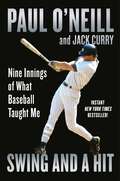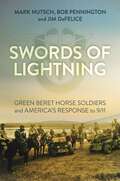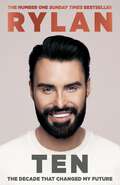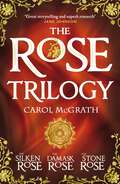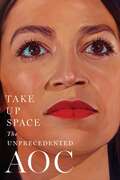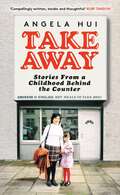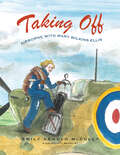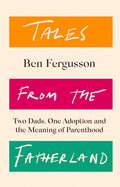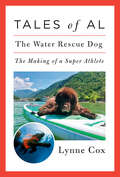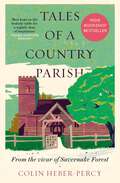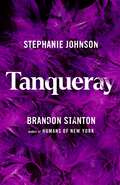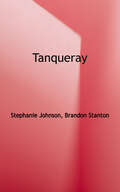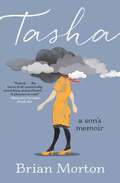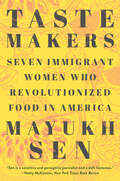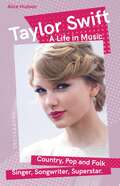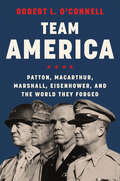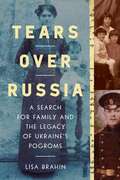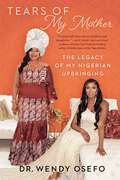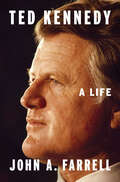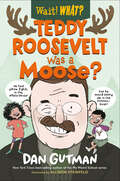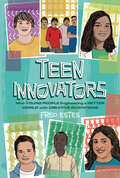- Table View
- List View
Swing and a Hit: Nine Innings of What Baseball Taught Me
by Jack Curry Paul O'NeillThis fun and fiery New York Times bestselling memoir tells the life story of All Star Yankee and five-time World Champion, Paul O&’Neill, like you&’ve never seen him before. In Swing and Hit, O&’Neill elaborates on his most important hitting principles, lessons, and memories—exploring those elements across ten chapters (to align with the nine innings of a baseball game and one extra inning). Here, O&’Neill, with his intense temperament, describes what he did as a hitter, how he adjusted to pitchers, how he boosted his confidence, how he battled with umpires (and water coolers), and what advice he would give to current hitters. O&’Neill has always been a tough out at the plate. Recalling how he started to swing at bat as a two-year-old and kept swinging it professionally until he was thirty-eight, O&’Neill provides constant insights into the beauty and frustration of playing baseball. The legendary Ted Williams said using a round bat to hit a round ball is the most difficult thing to do in sports. Naturally, O&’Neill, who once received a surprise call from Williams that was filled with hitting advice, agrees. Swing and Hit features O&’Neill&’s most thoughtful revelations and offers clubhouse stories from some of the biggest names in Major League Baseball—hitters, managers, and teammates like Joe Torre, Derek Jeter, Don Mattingly, Pete Rose, and Bernie Williams. Remember, O&’Neill, ever the perfectionist, was the type of hitter who believed that pitchers didn&’t ever get him out. For that incredible reason and so many others, Swing and Hit is essential reading for any baseball fan.
Swords of Lightning: Green Beret Horse Soldiers and America's Response to 9/11
by Jim DeFelice Bob Pennington Mark NutschThe first-person account of how a small band of Green Berets used horses and laser-guided missiles to overthrow the Taliban and al-Qaeda in Afghanistan after 9/11.They landed in a dust storm so thick the chopper pilot used dead reckoning and a guess to find the ground. They were met by a band of heavily armed militiamen who didn&’t understand a word they said. They climbed a mountain on horseback to meet the most ferocious warlord in Asia. They plotted a war of nineteenth-century maneuvers against a twenty-first-century foe. They saved babies and treated fevers, trekked through minefields, and waded through booby-trapped streams—sometimes past the mangled bodies of local tribesmen who&’d shared food with them hours before. They found their enemy hiding in thick concrete bunkers, dodged bullets from machine-gun-laden pickup trucks, and survived ambushes launched with Russian tanks. They fought back with everything they had, from smart bombs to AK-47s. They overthrew a government, mediated blood feuds between rival commanders, and argued with generals and politicians thousands of miles away. The men they helped called them gods. One of their commanders called them devils. Hollywood called them the Horse Soldiers. They called themselves Green Berets—Special Forces ODA 595.
TEN: The decade that changed my future
by Rylan ClarkPre-order the brand-new memoir from Rylan.Funny and outspoken, Rylan is one of the UK's most-loved presenters and a true household name. Rylan first emerged on our screens in September 2012 and in the ten years since then has become a one-of-a-kind national treasure. In this brand-new memoir, Rylan invites us deeper into his world to reflect on all the things he's learnt from a decade in the limelight, whilst also pulling back the curtain on his personal journey. Covering everything from fame and celebrity to his mental health and identity, family and relationships to his love of reality TV, he recounts his life lessons with humour, candour and a huge amount of heart. From the moments that have shaped him to the mistakes that have made him, and the unusual pastimes that have obsessed him along the way.With unforgettable stories about his rise to fame, his biggest regrets and his special bond with his beloved mum, TEN: The decade that changed my future is as warm and honest, enormously entertaining and full of surprises as its brilliant Sunday Times bestselling author.This is Rylan as you've never seen him before - an intimate, fascinating and joyful insight into an extraordinary ten years on the telly and in our hearts.
TEN: The decade that changed my future
by Rylan ClarkPre-order the brand-new memoir from Rylan.Funny and outspoken, Rylan is one of the UK's most-loved presenters and a true household name. Rylan first emerged on our screens in September 2012 and in the ten years since then has become a one-of-a-kind national treasure. In this brand-new memoir, Rylan invites us deeper into his world to reflect on all the things he's learnt from a decade in the limelight, whilst also pulling back the curtain on his personal journey. Covering everything from fame and celebrity to his mental health and identity, family and relationships to his love of reality TV, he recounts his life lessons with humour, candour and a huge amount of heart. From the moments that have shaped him to the mistakes that have made him, and the unusual pastimes that have obsessed him along the way.With unforgettable stories about his rise to fame, his biggest regrets and his special bond with his beloved mum, TEN: The decade that changed my future is as warm and honest, enormously entertaining and full of surprises as its brilliant Sunday Times bestselling author.This is Rylan as you've never seen him before - an intimate, fascinating and joyful insight into an extraordinary ten years on the telly and in our hearts.
TEST! Testing How a File Becomes a Book: a Bookshare Love Story
by None Of Us All Of UsThis is a test book. Please disregard.
THE ROSE TRILOGY: The exciting omnibus edition of THE SILKEN ROSE, THE DAMASK ROSE, THE STONE ROSE
by Carol McGrathThree glorious gripping novels - formerly known as The She-Wolves trilogy, now all in one volume for the first time as THE ROSE TRILOGY'Here is a novelist at ease with her subject. A compulsive read' Anne O'Brien'A real tour de force of gripping writing, rich historical detail and complex, fascinating characters' Nicola Cornick'Carol McGrath excels at sweeping the reader away on an engrossing journey through history . . . she brings her characters vividly to life' Jane Johnson'A wonderful little piece of time travel for any lover of historical fiction' Joanna Courtney'Full of intricate details, historical accuracy and complex plotting' Alexandra WalshThree queens of England - and three women who lived in their shadow.THE SILKEN ROSEThey called her the She-Wolf. She'd shape the destiny of England ...1236. Ailenor of Provence, cultured and intelligent, is only thirteen when she meets her new husband, Henry III of England. Rosalind, a commoner catches the young queen's attention and a friendship blossoms. But she is unprepared for the dangerous ramifications of winning the queen's favour ... THE DAMASK ROSEA beloved wife. A hated queen. A journey to her destiny ...1266. Eleanor of Castile, adored wife of the Crown Prince of England, is still only a princess when she is held hostage in the brutal Baron's Rebellion, and her baby daughter dies. As she rises to become Queen, Eleanor keeps Olwen - a trusted herbalist, by her side. But it is dangerous to be friendless in a royal household, and Olwen and Eleanor discover that the true battle for Europe may not be a matter of swords and lances, but one fanned by whispers and spies.THE STONE ROSEA queen must know her place, in a court of men . . . London, 1350. Agnes, daughter of a stonemason, is struggling to keep her father's trade in a city decimated by plague. And then she receives a mysterious message from the disgraced Queen Isabella: mother of King Edward III, and widow of Edward II. Isabella has a task that only Agnes can fulfil. She wants her truth to be told. But can either woman choose independence, follow her own desires, and survive?
THE ROSE TRILOGY: The exciting omnibus edition of THE SILKEN ROSE, THE DAMASK ROSE, THE STONE ROSE
by Carol McGrathThree glorious gripping novels - formerly known as The She-Wolves trilogy, now all in one volume for the first time as THE ROSE TRILOGY'Here is a novelist at ease with her subject. A compulsive read' Anne O'Brien'A real tour de force of gripping writing, rich historical detail and complex, fascinating characters' Nicola Cornick'Carol McGrath excels at sweeping the reader away on an engrossing journey through history . . . she brings her characters vividly to life' Jane Johnson'A wonderful little piece of time travel for any lover of historical fiction' Joanna Courtney'Full of intricate details, historical accuracy and complex plotting' Alexandra WalshThree queens of England - and three women who lived in their shadow.THE SILKEN ROSEThey called her the She-Wolf. She'd shape the destiny of England ...1236. Ailenor of Provence, cultured and intelligent, is only thirteen when she meets her new husband, Henry III of England. Rosalind, a commoner catches the young queen's attention and a friendship blossoms. But she is unprepared for the dangerous ramifications of winning the queen's favour ... THE DAMASK ROSEA beloved wife. A hated queen. A journey to her destiny ...1266. Eleanor of Castile, adored wife of the Crown Prince of England, is still only a princess when she is held hostage in the brutal Baron's Rebellion, and her baby daughter dies. As she rises to become Queen, Eleanor keeps Olwen - a trusted herbalist, by her side. But it is dangerous to be friendless in a royal household, and Olwen and Eleanor discover that the true battle for Europe may not be a matter of swords and lances, but one fanned by whispers and spies.THE STONE ROSEA queen must know her place, in a court of men . . . London, 1350. Agnes, daughter of a stonemason, is struggling to keep her father's trade in a city decimated by plague. And then she receives a mysterious message from the disgraced Queen Isabella: mother of King Edward III, and widow of Edward II. Isabella has a task that only Agnes can fulfil. She wants her truth to be told. But can either woman choose independence, follow her own desires, and survive?
Take Up Space: The Unprecedented AOC
by The Editors of New York MagazineA stunning four-color biography of Congresswoman Alexandria Ocasio-Cortez in the bestselling tradition of Notorious RBG and Pelosi that explores her explosive rise and impact on the future of American culture and politics.The candidate was young—twenty-eight years old, a child of Puerto Rico, the Bronx, and Yorktown Heights. She was working as a waitress and bartender. She was completely unknown, and taking on a ten-term incumbent in a city famous for protecting its political institutions. &“Women like me aren&’t supposed to run for office,&” Alexandria Ocasio-Cortez said in a video launching her campaign, the camera following her as she hastily pulled her hair into a bun. But she did. And in perhaps the most stunning upset in recent memory, she won. At twenty-nine, she was sworn in as the youngest member of the 116th Congress and became the youngest woman to serve as a representative in United States history. Before long, Ocasio-Cortez had earned her own shorthand title—AOC—and was one of the most talked-about public figures (loved and loathed) in the world. Her natural ability to connect with everyday people through the social media feeds grew her following into the multimillions. Every statement she made, every tweet and Instagram Live, went viral, and her term had barely begun before people were speculating that she could one day be president. The question seemed to be on everyone&’s mind: How did this woman come from nowhere to acquire such influence, and so fast? Now, in Take Up Space, that question is answered through a kaleidoscopic biography by the editors of New York magazine that features the riveting account of her rise by Lisa Miller, an essay by Rebecca Traister that explains why she is an unprecedented figure in American politics, and multiform explorations (reportage, comic, history, analysis, photography) of AOC&’s outsize impact on American culture and politics. Throughout, AOC is revealed in all her power and vulnerability, and understood in the context of the fast-changing America that made her possible—and perhaps even inevitable.
Takeaway: Stories from a childhood behind the counter
by Angela HuiAn eye-opening memoir revealing the stories behind living in and running a Chinese takeaway.Growing up in a Chinese takeaway in rural Wales, Angela Hui was made aware at a very young age of just how different she and her family were seen by her local community. From attacks on the shopfront (in other words, their home), to verbal abuse from customers, and confrontations that ended with her dad wielding the meat cleaver; life growing up in a takeaway was far from peaceful.But alongside the strife, there was also beauty and joy in the rhythm of life in the takeaway and in being surrounded by the food of her home culture. Family dinners before service, research trips to Hong Kong, preparing for the weekend rush with her brothers - the takeaway is a hive of activity before a customer even places their order of 'egg-fried rice and chop suey'.Bringing readers along on the journey from Angela's earliest memories in the takeaway to her family closing the shop after 30 years in business, this is a brilliantly warm and immersive memoir from someone on the other side of the counter.
Taking Off: Airborne With Mary Wilkins Ellis
by Emily Arnold McCullyWitness the true story of how Mary Wilkins Ellis’ childhood passion for flying led to an exciting career in the air, written and illustrated by a Caldecott Medalist. <p><p> As a child, Mary Wilkins Ellis longed to fly, but she had to wait until she was 16 before she could have her first lesson. She soon became the youngest licensed pilot in her English county, but then all civilian flight was banned when Germany launched its attacks on Britain in 1940. Mary was grounded. <p><p> One day she chanced to hear a radio appeal for Britons with pilot’s licenses—even women—to join the Air Transport Auxiliary and ferry brand new fighter planes to Royal Air Force bases. Mary immediately applied, and spent the rest of the war delivering hundreds of different kinds of aircraft—most of which she’d never flown before—forming lifelong bonds with her colleagues, surviving many a close call, and helping to save her country from destruction. <p><p> After the war she became a flight instructor, ran an air taxi service, then managed an airfield, the only woman in Europe to do so. In her spare time, she won rallies in her racing car. Mary’s childhood dream became a thrilling lifetime aloft, lasting until she died at 101. <p><p> With watercolor and ink illustrations which perfectly capture the exhilaration of flying, Taking Off brings this little-known figure and her can-do spirit to life. <p><p> Extensive material in the back of the book includes additional information about Mary Wilkins Ellis and the Airport Transport Auxiliary, as well as sources. <P><P><i>Advisory: Bookshare has learned that this book offers only partial accessibility. We have kept it in the collection because it is useful for some of our members. Benetech is actively working on projects to improve accessibility issues such as these.</i>
Tales from the Fatherland: Two Dads, One Adoption and the Meaning of Parenthood
by Ben FergussonA pause. 'Ah, Herr Fergusson. It's Frau Schwenk.' Our social worker, I now understood. 'Thank you for getting back to me. I'm calling because we have a little boy, four weeks old, who needs a family.'In 2018, after the introduction of marriage equality in Germany, Ben Fergusson and his German husband Tom became one of the first same-sex married couples to adopt in the country. In Tales from the Fatherland Fergusson reflects on his long journey to fatherhood and the social changes that enabled it. He uses his outsider status as both a gay father and a parent adopting in a foreign country to explore the history and sociology of fatherhood and motherhood around the world, queer parenting and adoption and, ultimately, the meaning of family and love.Tales from the Fatherland makes an impassioned case for the value of diversity in family life, arguing that diverse families are good for all families and that misogyny lies at the heart of many of the struggles of straight and queer families alike.
Tales of Al: The Water Rescue Dog
by Lynne CoxThe moving, inspiring story of Al, the ungainly, unruly, irresistible Newfoundland puppy who grows up to become a daring rescue dog and super athlete—part of Italy's elite, highly specialized corps of water rescue dogs who swoop out of helicopters and save lives.Lynne Cox—acclaimed best-selling author of Swimming to Antarctica—is internationally famous for swimming the world&’s most difficult waterways without a wet suit, and able to endure water temperatures so cold that they would kill anyone else, recognizes and celebrates all forms of athleticism in others, human or otherwise. And when she saw a video of a Newfoundland dog leaping from an airborne helicopter into Italian waters to save someone from drowning, Cox was transfixed by the rescue, and captivated by the magnificence, physicality, and daring of the dog. Tales of Al is the moving, inspiring story of Cox&’s adventures on Italy&’s picturesque Lake Idroscalo, as witness to the rigorous training of one of these spectacular dogs at SICS, the famed school that has taught hundreds of dog owners how to train their dogs—Newfoundlands, German shepherds, and golden retrievers—for this rescue operation. Cox writes about coming to know the dog at the book&’s center, Al herself, from puppyhood, an adorable but untrainable chocolate Newfoundland—about the dreams, expectations, disappointments, and vision of her trainer and about realizing the dog&’s full potential; striving with all of her canine might to become an expertly trained, highly specialized water rescue dog.
Tales of a Country Parish: From the vicar of Savernake Forest
by Colin Heber-Percy'A delightful book from a gentle, generous spirit.' - SIMON RUSSELL BEALE'Philosophical speculation, country lore, rock music, spiritual exploration, erudite and beautifully written, this collection of reflections and meditations is a surprise and a delight. The kind of shot in the arm the Church of England badly needs - and is so rarely to be found.' - SALLEY VICKERSDuring the unprecedented circumstances of Spring 2020, Colin Heber Percy began writing a daily newsletter of reflections and uplifting stories to stay in touch with his parishioners. Word spread, and soon his bulletins were being eagerly consumed by readers around the country and beyond.In this thought-provoking and invigorating book, Heber-Percy draws upon a kaleidoscopic knowledge of nature, philosophy, poetry and music, as well as religious writings, and interlaces them with amusing and touching vignettes from his Wiltshire parish.As he follows the changing seasons, Heber-Percy moves from the seemingly small and mundane to ponder big life questions - can you find heaven in a Londis shop, why is the Bible not like the Highway Code, what on earth we are all doing here - while gently offering up wisdom and sustenance for all, regardless of faith and creed.
Tales of a Country Parish: From the vicar of Savernake Forest
by Colin Heber-Percy'A delightful book from a gentle, generous spirit.' - SIMON RUSSELL BEALE'Philosophical speculation, country lore, rock music, spiritual exploration, erudite and beautifully written, this collection of reflections and meditations is a surprise and a delight. The kind of shot in the arm the Church of England badly needs - and is so rarely to be found.' - SALLEY VICKERSDuring the unprecedented circumstances of Spring 2020, Colin Heber Percy began writing a daily newsletter of reflections and uplifting stories to stay in touch with his parishioners. Word spread, and soon his bulletins were being eagerly consumed by readers around the country and beyond.In this thought-provoking and invigorating book, Heber-Percy draws upon a kaleidoscopic knowledge of nature, philosophy, poetry and music, as well as religious writings, and interlaces them with amusing and touching vignettes from his Wiltshire parish.As he follows the changing seasons, Heber-Percy moves from the seemingly small and mundane to ponder big life questions - can you find heaven in a Londis shop, why is the Bible not like the Highway Code, what on earth we are all doing here - while gently offering up wisdom and sustenance for all, regardless of faith and creed.
Tanqueray
by Stephanie Johnson Brandon StantonThe storytelling phenomenon Humans of New York and its #1 bestselling books have captivated a global audience of millions with personal narratives that illuminate the human condition. But one story stands apart from the rest...She is a woman as fabulous, unbowed, and irresistible as the city she lives in. Meet TANQUERAY.In 2019, Humans of New York featured a photo of a woman in an outrageous fur coat and hat she made herself. She instantly captured the attention of millions. Her name is Stephanie Johnson, but she’s better known to HONY followers as “Tanqueray,” a born performer who was once one of the best-known burlesque dancers in New York City. Reeling from a brutal childhood, immersed in a world of go-go dancers and hustlers, dirty cops and gangsters, Stephanie was determined to become the fiercest thing the city had ever seen. And she succeeded.Real, raw, and unapologetically honest, this is the full story of Tanqueray as told by Brandon Stanton—a book filled with never-before-told stories of Tanqueray's struggles and triumphs through good times and bad, personal photos from her own collection, and glimpses of New York City from back in the day when the name “Tanqueray” was on everyone’s lips.
Tanqueray
by Stephanie Johnson Brandon Stanton"A deeply touching memoir . . . A beautiful, sometimes shocking NC-17 story, kept out of the lily-white, upper crust canon of literature--until now."" --The Washington Post The storytelling phenomenon Humans of New York and its #1 bestselling books have captivated a global audience of millions with personal narratives that illuminate the human condition. But one story stands apart from the rest... She is a woman as fabulous, unbowed, and irresistible as the city she lives in. Meet TANQUERAY. In 2019, Humans of New York featured a photo of a woman in an outrageous fur coat and hat she made herself. She instantly captured the attention of millions. Her name is Stephanie Johnson, but she's better known to HONY followers as ""Tanqueray,"" a born performer who was once one of the best-known burlesque dancers in New York City. Reeling from a brutal childhood, immersed in a world of go-go dancers and hustlers, dirty cops and gangsters, Stephanie was determined to become the fiercest thing the city had ever seen. And she succeeded. Real, raw, and unapologetically honest, this is the full story of Tanqueray as told by Brandon Stanton--a book filled with never-before-told stories of Tanqueray's struggles and triumphs through good times and bad, personal photos from her own collection, and glimpses of New York City from back in the day when the name "Tanqueray" was on everyone's lips."
Tasha: A Son's Memoir
by Brian MortonIn the spirit of Fierce Attachments, Bettyville, and The End of Your Life Book Club, acclaimed novelist Brian Morton delivers a moving, darkly funny memoir of his mother&’s vibrant life and the many ways in which their tight, tumultuous relationship was refashioned in her twilight years.Tasha Morton is a force of nature: a brilliant educator who&’s left her mark on generations of students—and also a whirlwind of a mother, intrusive, chaotic, oppressively devoted, and irrepressible. For decades, her son Brian has kept her at a self-protective distance, but when her health begins to fail, he knows it&’s time to assume responsibility for her care. Even so, he&’s not prepared for what awaits him, as her refusal to accept her own fragility leads to a series of epic outbursts and altercations that are sometimes frightening, sometimes wildly comic, and sometimes both. Clear-eyed, loving, and brimming with dark humor, Tasha is an exploration of what sons learn from their mothers, a stark look at the impossible task of caring for an elderly parent in a country whose unofficial motto is &“you&’re on your own,&” and a meditation on the treacherous business at the heart of every family—the business of trying to honor ourselves without forsaking our parents, and our parents without forsaking ourselves. Above all, Tasha is a vivid and surprising portrait of an unforgettable woman.
Taste Makers: Seven Immigrant Women Who Revolutionized Food In America
by Mayukh SenOne of the Millions's Most Anticipated Books of 2021 America’s modern culinary history told through the lives of seven pathbreaking chefs and food writers. Who’s really behind America’s appetite for foods from around the globe? This group biography from an electric new voice in food writing honors seven extraordinary women, all immigrants, who left an indelible mark on the way Americans eat today. Taste Makers stretches from World War II to the present, with absorbing and deeply researched portraits of figures including Mexican-born Elena Zelayeta, a blind chef; Marcella Hazan, the deity of Italian cuisine; and Norma Shirley, a champion of Jamaican dishes. In imaginative, lively prose, Mayukh Sen—a queer, brown child of immigrants—reconstructs the lives of these women in vivid and empathetic detail, daring to ask why some were famous in their own time, but not in ours, and why others shine brightly even today. Weaving together histories of food, immigration, and gender, Taste Makers will challenge the way readers look at what’s on their plate—and the women whose labor, overlooked for so long, makes those meals possible.
Taylor Swift: A Life in Music (Want to know More about Rock & Pop?)
by Alice HudsonA quick read for anyone who wants to know a little more about the most incredible, talented superstar of her generation.Former country music sensation Taylor Swift is one of the most accomplished singer/songwriters to storm the charts. Talented and gorgeous, Swift is no stranger to winning awards, from Academy of Country Music Awards to Grammys, her enormous popularity amongst the country music scene has allowed her to cross over into popular music with hits such as &‘We Are Never Ever Getting Back Together&’, &‘I Knew You Were Trouble&’, 'Shake it Off', 'Look What You Made Me Do' and her latest album Evermore, not to mention her re-recordings of her masters, the latest being Red (Taylor's Version). Fascinating text tells the remarkable story of this inspirational and phenomenal performer.
Team America: Patton, MacArthur, Marshall, Eisenhower, and the World They Forged
by Robert L. O'ConnellFrom national bestselling author and acclaimed military historian Robert L. O’Connell, a dynamic history of four military leaders whose extraordinary leadership and strategy led the United States to success during World War I and beyond.By the first half of the twentieth century, technology had transformed warfare into a series of intense bloodbaths in which the line between soldiers and civilians was obliterated, resulting in the deaths of one hundred million people. During this period, four men exhibited unparalleled military leadership that led the United States victoriously through two World Wars: Douglas MacArthur, George Patton, George Marshall, and Dwight “Ike” Eisenhower; or, as bestselling author Robert O’Connell calls them, Team America.O’Connell captures these men’s unique charisma as he chronicles the path each forged—from their upbringings to their educational experiences to their storied military careers—experiences that shaped them into majestic leaders who would play major roles in saving the free world and preserving the security of the United States in times of unparalleled danger. O’Connell shows how the lives of these men—all born within the span of a decade—twisted around each other like a giant braid in time. Throughout their careers, they would use each other brilliantly in a series of symbiotic relationships that would hold increasingly greater consequences.At the end of their star-studded careers (twenty-four out of a possible twenty-five), O’Connell concludes that what set Team America apart was not their ability to wield the proverbial sword, but rather their ability to plot strategy, give orders, and inspire others. The key ingredients to their success was mental agility, a gravitas that masked their intensity, and an almost intuitive understanding of how armies in the millions actually functioned and fought. Without the leadership of these men, O’Connell makes clear, the world we know would be vastly different.
Tears Over Russia: A Search for Family and the Legacy of Ukraine's Pogroms
by Lisa BrahinA sweeping saga of a family and community fighting for survival against the ravages of history.Set between events depicted in Fiddler on the Roof and Schindler&’s List, Lisa Brahin&’s Tears over Russia brings to life a piece of Jewish history that has never before been told. Between 1917 and 1921, twenty years before the Holocaust began, an estimated 100,000 to 250,000 Jews were murdered in anti-Jewish pogroms across the Ukraine. Lisa grew up transfixed by her grandmother Channa&’s stories about her family being forced to flee their hometown of Stavishche, as armies and bandit groups raided village after village, killing Jewish residents. Channa described a perilous three-year journey through Russia and Romania, led at first by a gallant American who had snuck into the Ukraine to save his immediate family and ended up leading an exodus of nearly eighty to safety. With almost no published sources to validate her grandmother&’s tales, Lisa embarked on her incredible journey to tell Channa&’s story, forging connections with archivists around the world to find elusive documents to fill in the gaps of what happened in Stavishche. She also tapped into connections closer to home, gathering testimonies from her grandmother&’s relatives, childhood friends and neighbors. The result is a moving historical family narrative that speaks to universal human themes—the resilience and hope of ordinary people surviving the ravages of history and human cruelty. With the growing passage of time, it is unlikely that we will see another family saga emerge so richly detailing this forgotten time period. Tears Over Russia eloquently proves that true life is sometimes more compelling than fiction.
Tears of My Mother: The Legacy of My Nigerian Upbringing
by Dr Wendy OsefoWhen star of Bravo&’s The Real Housewives of Potomac Dr. Wendy Osefo was growing up, her mother was her everything. But when she became a mother herself, everything changed. In this powerful memoir, Wendy explores how her Nigerian upbringing has affected her life, her success, and her role as a parent.Wendy Osefo&’s mother, Iyom Susan Okuzu, arrived in the United States from Nigeria with two things: a single suitcase and the fierce determination to make a better life for herself and her future family. And she succeeded: starting out working in a fast-food restaurant and ultimately becoming the director of nursing at a major metropolitan hospital. While Susan may have taken pride in triumphing over every financial and emotional challenge, in Nigerian culture, a parent is only as successful as his or her children. And so her daughter, with gratitude and appreciation for her mother&’s sacrifices, worked hard to meet every demand Susan made of her. With four advanced degrees and a position at Johns Hopkins University as a professor—as well as being a highly sought-after political commentator, a cherished wife, and a loving mother of three—Dr. Wendy has given her mother bragging rights for life. But at what cost to herself? In Tears of My Mother, the star of The Real Housewives of Potomac describes growing up as a first-generation American, balancing two distinct cultures. And she takes a critical look at the paradox of her mother&’s parenting: approval conditioned by achievement. As a teenager, Wendy struggled to carve out her own identity while still walking the narrow path of her mother&’s expectations. Unwavering family loyalty and obedience gave Wendy the road map to making it in America, but it also drove a wedge between mother and daughter, never more so than when she began to build her own family. To this day, Wendy still grapples with how much she owes her mother and how to blend her American experience and Nigerian legacy in raising her children. At what point does the dutiful child become a woman in her own right? This book is for anyone who has faced conflict in the mother-daughter relationship, or wondered how much of their own upbringing they want to pass on to the next generation.
Ted Kennedy: A Life
by John A. FarrellLONGLISTED FOR THE 2022 NATIONAL BOOK AWARD FOR NONFICTIONAn enthralling and ground-breaking new biography of one of modern America&’s most fascinating and consequential political figures, drawing on important new sources, by an award-winning biographer who covered Kennedy closely for many yearsJohn A. Farrell&’s magnificent biography of Edward M. Kennedy is the first single-volume life of the great figure since his death. Farrell&’s long acquaintance with the Kennedy universe and the acclaim accorded his previous books—including his New York Times bestselling biography of Richard Nixon, a finalist for the Pulitzer Prize—helped garner him access to a remarkable range of new sources, including segments of Kennedy&’s personal diary and his private confessions to members of his family in the days that followed the accident on Chappaquiddick. Farrell is, without question, one of America&’s greatest political biographers and a storyteller of deep wisdom and empathy. His book does full justice to this famously epic and turbulent life of almost unimaginable tragedy and triumph.As the fourth son of the close-knit but fiercely competitive Kennedy clan, Ted was the runt of the litter. Expelled from Harvard University for cheating, he was a fun-loving playboy who nevertheless served his brothers loyally and effectively. It was easy to take Ted lightly, and many did. But when he was elected to the United States Senate at the age of thirty to fill his brother Jack&’s seat, something unexpected happened: he found his home and his calling there. Over time, Ted Kennedy would build arguably the most significant senatorial career in American history.His life was buffeted by heartbreak: the violent deaths of his three older brothers, his own terrible plane crash, his children&’s bouts with cancer, and the hideous self-inflicted wounds of Chappaquiddick and stretches of drinking and womanizing that caused irreparable damage to an already fragile first marriage. Those wounds scarred Ted deeply but also tempered his character, and, eventually, he embarked on a run as legislator, party elder, and paterfamilias of the Kennedy family that would change America for the better. John A. Farrell brings us the man as he was, in strength and weakness, his profound but complicated inheritance and his vital legacy, as only a great biographer can do. Without the story this book tells, no understanding of modern America can be complete.
Teddy Roosevelt Was a Moose? (Wait! What? #0)
by Dan GutmanFrom the best-selling author of My Weird School: a new entry in the offbeat and engaging biography series that casts fresh light on high-interest historic figures. Did you know that Theodore Roosevelt was shot before a rally, and went on to give his speech with the bullet in his chest? Or that he skinny-dipped in the Potomac River? Bet you didn’t know that he had a zebra, a lion, and a one-legged rooster at the White House! Siblings Paige and Turner have collected some of the most unusual and surprising facts about the larger-than-life president, from his childhood and his Rough Rider days to his rise to politics and his complicated presidential legacy. Narrated by the two spirited siblings and animated by Allison Steinfeld’s upbeat illustrations, Teddy Roosevelt is an authoritative, accessible, and one-of-a-kind biography infused with Dan Gutman’s signature zany sense of humor.
Teen Innovators: Nine Young People Engineering a Better World with Creative Inventions
by Fred EstesA water purification system made of concrete and the same chemicals that block ultraviolet light in sunscreen. A robot made of PVC pipe that beat a shiny, eleven-thousand-dollar competitor in a robotics contest. An electricity-producing windmill built by a teen who taught himself physics by candlelight. Teen Innovators: Nine Young People Engineering a Better World with Creative Inventions reveals how people of any age or experience level can create something that changes others' lives through nothing more than hard work, creativity, and inspiration. (Oh, and perhaps a bit of electrical wire, some plastic piping, and a couple tampons.) Utilizing the principles of design thinking, these inventors all tinkered, experimented, and failed—repeatedly—until their inventions worked. The windmill produced light. The water became safe to drink. Jack Andraka: improved pancreatic cancer test Gitanjali Rao: device to detect lead in drinking water William Kamkwamba: improvised electrical generator using windmill in Malawi Austen Veseliza: digital display glove to aid people with speech impairment Deepika Kurup: easier, cheaper method to remove toxins from drinking water Cristian Arcega, Lorenzo Santillan, Oscar Vasquez, Luis Aranda: underwater robot Each of these stories offers inspiration to the next generation of teen innovators. You don't need a genius-level IQ or the latest and greatest technologies to create something that makes a difference. All you need is an idea and the determination to make it real.
